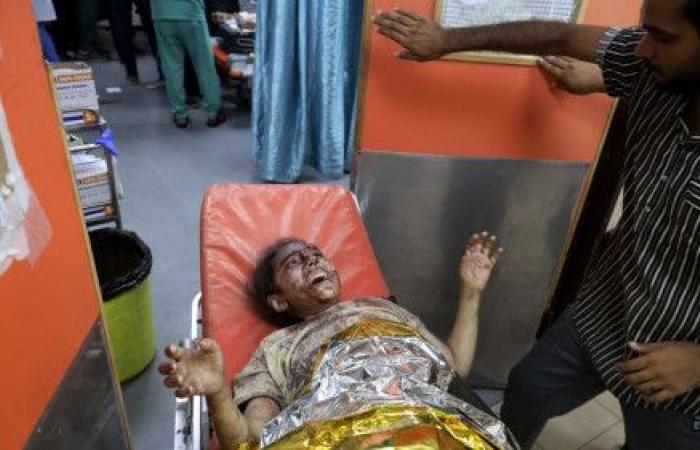In Gaza, doctors can do little to ease the pain of three-year-old Sahib Khuzaiq. The little boy had his leg amputated after being hit by shrapnel from an Israeli shell. The besieged Palestinian territory, which is experiencing a shortage of medicines.
“Sahib is in pain and needs painkillers and a prosthesis that is only available outside Gaza,” his father Ali Khuzaiq, 31, told AFP from Al-Ahli hospital in Gaza City where his son is being treated. On December 6, an Israeli airstrike on their Tal Al-Hawa neighbourhood, southwest of Gaza City, injured Sahib and destroyed the family home, Khuzaiq said.
The lack of medicines and equipment in Gaza since the start of the war has forced medical teams to perform amputations to treat injuries that, in some cases, could have been avoided.
2,000 children amputated
According to the head of the UN agency for Palestinian refugees (UNRWA), Philippe Lazzarini, ten children lose a leg or two in the Gaza Strip on average every day, adding that this figure does not take into account children who lose an arm or a hand. “Ten per day, that means around 2,000 children” since October, Mr. Lazzarini said on Tuesday.
Gaza Civil Defense spokesman Mahmoud Basal told AFP that the estimate seemed realistic because “when the civil defense teams work on the ground, with each strike they recover children, many of whom lose legs or arms, sometimes requiring amputations.”
Medical sources say amputations are often the only option and are carried out in poor conditions.
“There are times when anesthesia is not available, but to save the life of an injured person, we resort to amputation, which causes severe pain” in the patient, Dr. Maher, a surgeon at Al-Ahli hospital, told AFP. “Every day, attacks lead to amputations of legs or arms in children, adults and women,” he said.
Hospitals out of service
Prosthetics to replace amputated limbs are scarce in the Gaza Strip, which is under an Israeli blockade that restricts the entry of medical equipment and medicines. “The hospitals here have no treatment or medicines,” said Khuzaiq, who hopes Sahib can be treated outside Gaza.
The north of the Gaza Strip is more difficult to access than the south for the delivery of humanitarian aid. Most hospitals “are out of service due to direct attacks by the Israeli army,” he assures.
Marwa Abu Zaida, 40, and her son Nasser Abu Drabi, eight, also hope to leave the Palestinian territory to receive medical care and suitable prosthetics. The mother’s leg and the boy’s arm were amputated after they were injured in an Israeli strike on their home in Beit Lahia, north of Gaza City.
“My son and I are afraid to change our dressing because of the pain,” said the mother who does not have access to painkillers. “The health sector has completely collapsed in Gaza,” denounces the head of the Palestinian Red Crescent Bashar Murad.
Few evacuations
Medical evacuations are being carried out sparingly, even for those with serious illnesses. Since October 7, “4,989 people” have been able to be evacuated from the Gaza Strip for medical reasons, but “25,000” still need to leave “to be treated,” Murad assures.






